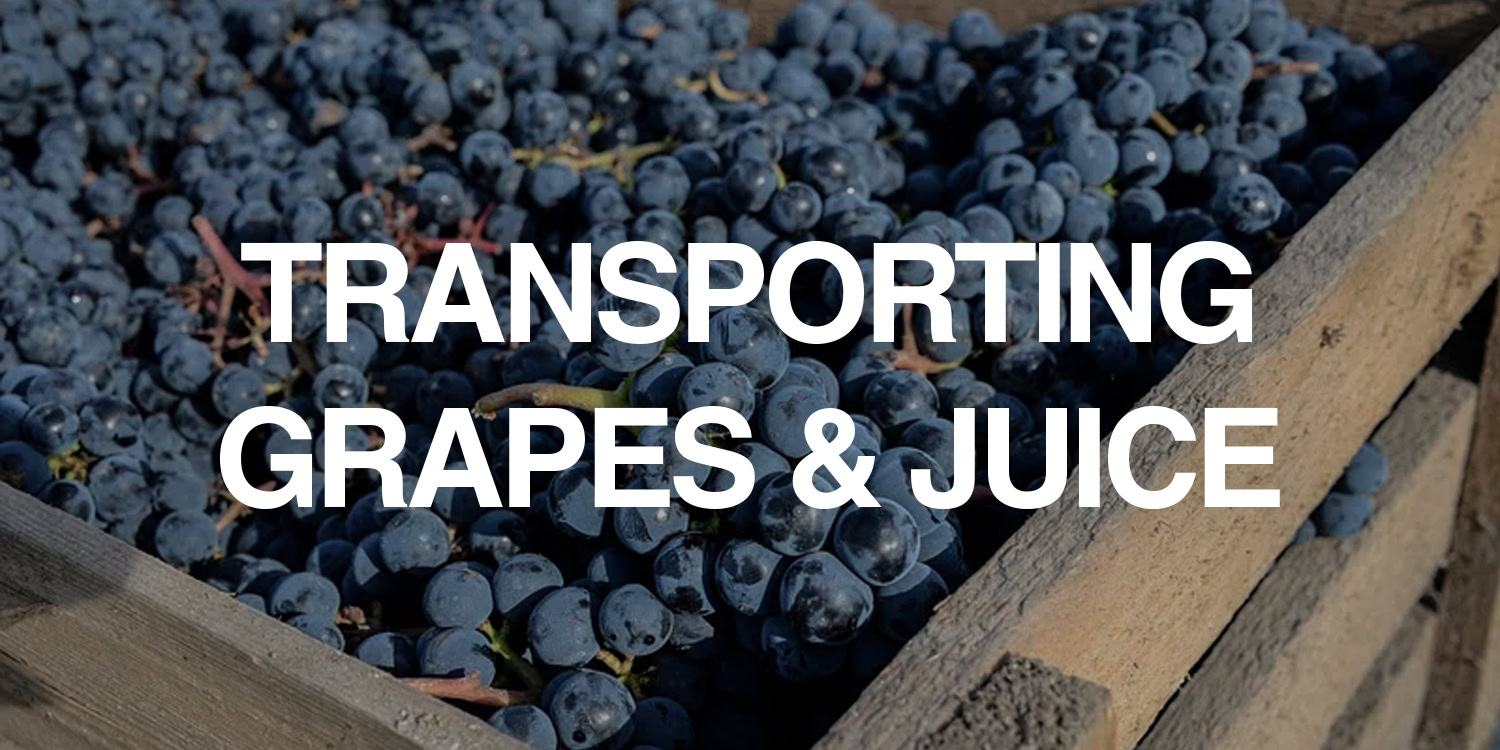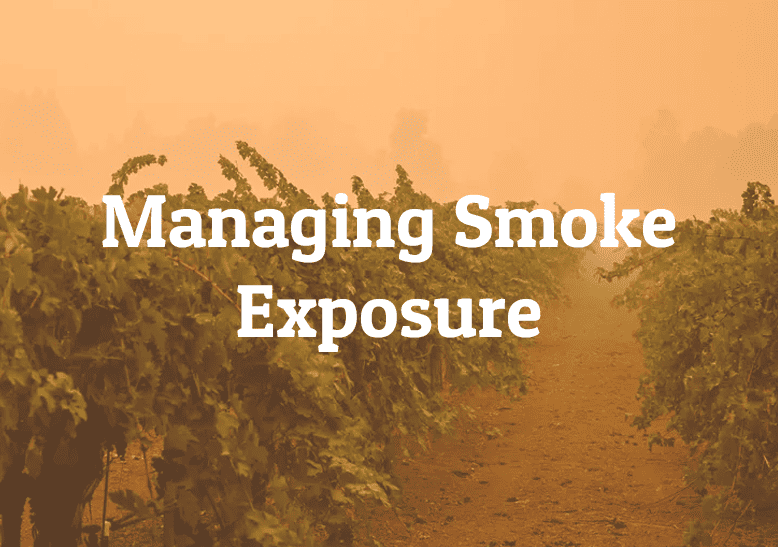Extreme heat spells during the late stages of grape ripening can lead to many difficulties in wine cellars. There is often a compression
of harvest dates among different varieties, leading to a congestion in many cellars and a need to turn tanks over quickly. Some key
negative side effects of a heat wave that impact wine quality are:
- High brix without grape maturity (green tannins).
- Sunburn on fruit.
- Low malic acid levels, resulting in difficult MLF conditions.
- Acid balance TA/pH out of normal range.
- Low juice yields from dehydrated fruit.
- High phenolic extraction during white grape pressing.
- Musts/juices that are low in YAN, but high in protein content.
White Grapes

With sunburn or dehydrated white fruit, the biggest threat to the finished wine is high phenolic content which gives bitterness and early oxidation (browning/off flavor) potential. There is also a low juice yield. Juice from heat shock growing conditions have high protein levels and low malic acid. Here are suggestions for modifying your standard protocol for working with white fruit with sunburn/dehydration:
1. Before Pressing

2. Juice Settling

- Add 50 ppm SO2 to the juice.
- Juice from sunburn fruit can be difficult to settle, so we also recommend using a strong pectinase enzyme, LAFAZYM® CL, on the juice for settling. Add LAFAZYM® CL at 15 ppm to the juice.
- To reduce the phenolic compounds in the juice, a fining treatment at juice settling with POLYLACT®, CASEI PLUS or POLYMUST® PRESS at 200 – 600 ppm.
- The protein content of the juice will be higher than normal. A bentonite addition can help reduce the protein levels and lower the amount of bentonite needed to stabilize the wine after fermentation. It is important to allow at least 6 hours between the LAFAZYM® CL (enzyme) addition and the bentonite addition, as the bentonite will inactivate the enzyme activity. Recommended bentonite addition is 350 ppm of MICROCOL® FT.
3. Fermentation

- Low YAN levels should be corrected with NUTRISTART®, a combination of organic nitrogen, DAP, and Thiamine. It is important to use a complex nutrient, not only DAP. You want at least 150 ppm YAN in the juice before adding the yeast.
- It is important to use SUPERSTART® BLANC, yeast re-hydration nutrient, to boost the yeast and maximize fermentation aromatics. Add to re-hydration water (104°F) at 250 ppm.
- Use a yeast strain with strong fermentation capacity, such as ZYMAFLORE® X5, ZYMAFLORE® X16 or ACTIFLORE® BO213.
- Consider doing co-fermentation for any wines that you want to complete ML fermentation. Use a strong strain like LACTOENOS® B7 DIRECT.
4. Post fermentation
- To help build midpalate weight and remove astringent characters from the wine, add OENOLEES® at 200 – 400 ppm.
Red Grapes

With sunburn or dehydrated red fruit, the sugar levels are high but the tannin and phenolic maturity are not optimal. There is the risk of extracting herbaceous character from the skins and seeds. The under ripe fruit can have lower anthocyanins, resulting in wines with lighter color. Juice conditions are generally lower in YAN and malic acid, but higher in protein. The higher protein content will bind up more natural tannin from the skins. Here are suggestions for modifying your standard protocol for working with red fruit with sunburn/dehydration:
1. Processing

- Add 50 ppm SO2 to the juice.
- Use a fermentation tannin such as TANIN VR SUPRA® ÉLÉGANCE to bind with the increased protein in the must. This will preserve your skin tannin and help build up the backbone structure of the wine. TANIN VR SUPRA® ÉLÉGANCE added at the crusher at 200 – 300 ppm.
- Enzymes are key for improving juice yield and for getting extraction of anthocyanins quickly from the skins. In the case of green character, it is recommended to extract early and press off early. LAFASE® FRUIT is a pectinase that will increase juice yield, extract anthocyanin, and improve settling post fermentation. Add LAFASE® FRUIT at 40 g/ton at first tank mixing.
- Addition of oak chips/granular during fermentation will help to mask herbaceous character in the wine. NOBILE® FRESH or NOBILE® SPICE are good choices for fermentation oak, use at 3 g/L.
2. Fermentation

- Measure acid levels after a couple days and adjust twice if needed. The buffering capacity of the juice will be out of balance, and acid in juice can drop significantly after time in contact with skins.
- Low YAN levels should be corrected with NUTRISTART®, a combination of organic nitrogen, DAP, and Thiamine. It is important to use a complex nutrient, not only DAP. You want at least 150 ppm YAN in the juice before adding the yeast.
- It is important to use SUPERSTART® ROUGE, yeast re-hydration nutrient, to boost the yeast and maximize fermentation aromatics. Add to re-hydration water (104°F) at 250 ppm.
- Use a yeast strain with strong fermentation capacity, such as ZYMAFLORE® FX10, ZYMAFLORE® RX60 or ACTIFLORE® BO213.
- Consider doing co-fermentation for any wines that you want to complete ML fermentation. Use a strong strain like LACTOENOS® B7 DIRECT.
3. Post Pressing

- Early fining of press fractions with POLYMUST® PRESS will help remove astringent and/or bitter phenolics. POLYMUST® PRESS addition range 200 – 400 ppm.
- Help build midpalate weight and remove astringent characters from the wine, add OENOLEES® at 200 – 400 ppm.
During aging, for both red and whites, evaluate wines early and do fining trials to remove bitterness and astringency. Also adjust any acid imbalance with tartaric acid. Oak aging can add length and mask herbaceous characters from the sub-optimal maturity of the fruit.




